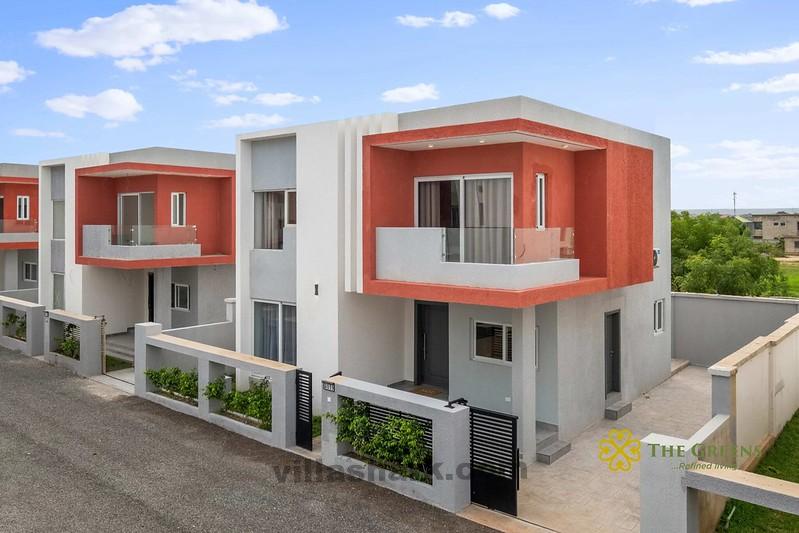
What is TI in Real Estate?

In business realty,
occupant enhancement (TI) plays a crucial function in shaping rented spaces to fulfill occupants' particular requirements. Whether it's a new office for an innovation business, a store, or a commercial facility, tenant improvements enable companies to create an environment fit to their operations. The occupant enhancement allowance (TI allowance) is a crucial consider lease negotiations, affecting rental rates, lease terms, and the residential or commercial property's overall value.
Tenant improvements, likewise understood as leasehold improvements, describe adjustments made to a leased residential or commercial property to accommodate a tenant's organization requirements. These enhancements can vary from structural changes to HVAC systems to electrical work, security systems, and more. Understanding the TI allowance, its monetary implications, and finest practices for handling building and construction expenses is necessary for renters and residential or commercial property owners.
This article checks out tenant improvements, their significance in commercial genuine estate, and their impact on residential or commercial property worth, rental space, and long-lasting financial investment
returns.
- Tenant improvement allowance (TI allowance) is a substantial consider lease negotiations and impacts rental rates and lease terms.
- Leasehold enhancements, including structural modifications, electrical systems, and meeting rooms, cater to an occupant's service requirements.
- Residential or commercial property owners use TI allowances to bring in high-quality occupants and increase the residential or commercial property's value.
- TI projects include hard expenses (e.g., construction products) and soft costs (e.g., legal fees, necessary authorizations, and renting commissions).
- Understanding tenant improvements' costs assists occupants and property managers manage spending plan expectations and possible cost overruns.
- TI allowances vary based on square video, location, and the competitive market characteristics of industrial residential or commercial properties.
Understanding Tenant Improvement Allowance (TI Allowance)
Tenant improvement allowance (TI allowance) is the money a residential or commercial property owner supplies to a renter to cover the expense of
improvements to a rented area. This allowance is usually worked out as part of the industrial lease agreement and is influenced by elements such as rental rate, lease duration, and the tenant's creditworthiness.
The overall dollar sum of the TI allowance differs based on the type of industrial residential or commercial property and the degree of enhancements needed. Residential or commercial property owners typically offer a TI allowance as a reward to attract possible occupants, particularly in a competitive market. In some cases, proprietors may likewise provide free lease for a certain duration to balance out building and construction costs.
The Role of Leasehold Improvements in Commercial Real Estate
Leasehold enhancements consist of different adjustments to a leased area to satisfy the occupant's special requirements. These improvements might consist of:
Structural modifications: Modifications to walls, ceilings, and floorings.
HVAC systems: Upgrading heating, ventilation, and cooling.
Electrical systems: Installing brand-new wiring, lighting, and power outlets.
Security systems: Adding surveillance cameras, keycard access, and alarm systems.
Meeting rooms: Constructing conference spaces or collaborative work spaces.
Wall coverings and surfaces: Enhancing looks with brand-new paint, wallpaper, or paneling.
Leasehold improvements boost the performance and effectiveness of a leased area, guaranteeing that it lines up with the tenant's organization needs. Residential or
commercial property owners frequently buy these enhancements to maintain trusted occupants and keep a high residential or commercial property value.
Financial Considerations: Hard Costs vs. Soft Costs
TI tasks involve both hard expenses and soft expenses:
Hard costs: These include physical construction expenses such as products, labor, HVAC setup, pipes, and electrical work.
Soft costs: These include legal charges, design consulting, required authorizations, renting commissions, and company guidance related to rent agreements.
Understanding these expenses helps occupants and property owners manage the total dollar sum of enhancements, avoiding expense overruns and guaranteeing a balanced spending plan.
The Impact of Tenant Improvements on Residential Or
Commercial Property Value
Tenant enhancements contribute to the long-term value of an industrial residential or commercial property. Well-designed TI jobs can:
- Attract high-quality renters going to pay higher leas.
- Increase the residential or commercial property's cap rate, improving investment returns.
- Enhance the residential or commercial property's attract future occupants, reducing job rates.
- Support metropolitan advancement efforts by modernizing rented residential or
commercial properties.
Moreover, residential or commercial property owners frequently structure TI allowances strategically, incorporating the expense into rental payments or utilizing a credit line to fund improvements.
Tax and Accounting Implications of TI Allowance
The expense of tenant improvements might have tax ramifications for both landlords and occupants. Depending on the lease terms, enhancements might be classified as:
Taxable income: If an occupant receives a TI allowance as a lump amount, it might be considered
taxable.
Capital improvements: Some leasehold improvements may receive depreciation reductions on balance sheets.
Government agencies such as Fannie Mae, Freddie Mac, and the Department of Housing supply guidelines on how to treat occupant improvements in realty accounting.
Best Practices for Managing Tenant Improvements
To optimize the advantages of occupant improvements, renters and property managers must follow these best practices:
- Conduct extensive lease negotiations to secure favorable TI allowances.
- Define necessary terms in the lease arrangement to avoid disputes over the cost of enhancements.
- Obtain necessary authorizations to guarantee compliance with local building policies.
- Work with skilled property agents to examine the fair market value of TI allowances.
- Consider service operations and brand name identity when designing rented spaces.
- Plan for future renters by carrying out flexible designs that accommodate various company needs.
Technology's Role in Tenant Improvements
Artificial intelligence innovations are
transforming TI tasks by
allowing more exact budgeting, forecasting construction expenses, and automating lease negotiations. AI-generated content, such as auto-generate responses to rent inquiries, assists enhance decision-making procedures for landlords and tenants alike.
Tenant Improvements and the Future of Commercial Real Estate
With the rise of brand-new business area advancements and increasing demand for tailored workplace environments, occupant enhancements will continue to play a significant function in the commercial realty sector. Residential or commercial property owners who invest in high-quality enhancements will remain competitive, attracting organizations seeking fully equipped rental residential or commercial properties.
Privacy policies, regards to use, and cookies on business realty sites also influence leasing choices. A website run by a
realty firm must use clear info on TI allowances, lease terms, and business requirements to boost the occupant's experience.
Tenant enhancements are important to commercial lease agreements,
forming the use, worth, and marketability of leased residential or commercial properties. The tenant improvement allowance is a monetary tool that benefits tenants and property owners by assisting in required modifications to a leased space. From meeting business needs to enhancing residential or commercial property value, TI tasks play an essential function in the long-lasting success of commercial real estate financial investments.
Understanding the balance between building expenses, rental rates, and lease terms is necessary for making educated leasing choices. By leveraging best practices, including ingenious innovation, and concentrating on tenant-specific needs, residential or commercial property owners and occupants can guarantee a great experience in rented commercial residential or commercial properties.
